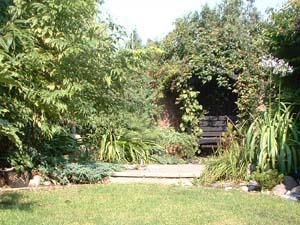 Most of the plants in our gardens can be considered our ‘friends’, however there are a few plants that are our foes.
Most of the plants in our gardens can be considered our ‘friends’, however there are a few plants that are our foes.
Here in Britain there are few deadly poisonous plants, but there are some plants that could be harmful if ingested and some plants can cause skin irritations.
The first main precaution to take is to never allow any child to pick and eat any berries of plants, as it is always best to err on the side of caution.
The brightly coloured berries can be tempting to a child so either deadhead the plant before it produces the berries, remove the berries from the plant, or simply don’t have berry-producing plants in the garden.
A lot of retailers and plant suppliers are now providing more information on the labels as to whether the plant can be potentially hazardous in any way.
So always read the labels when purchasing your plants at a garden centre, or if you’re not sure then ask an assistant as they’ll be more than willing to help and give advice.
Various parts of plants can cause diarrhoea or vomiting if eaten.
Here named are a few of these harmful common garden plants.
All parts of the Aconitum, monkshood, for instance is poisonous and prolonged handling of this plant can enable the toxins to be absorbed into the skin. Other plants too have to be handled with care as they could irritate the skin or cause a skin allergy, so wear protective gardening gloves.
Aesculus horse chestnut is also poisonous and be aware that children may be tempted to eat the conkers thinking that they are edible chestnuts. Others plants include Aquilegia, Colchicum, Convallaria Majalis, which is the lily of the valley.
Also in this category are the Cherry Laurel, Daffofils, Euonymus, Euphorbia, Hedera, ivy, Iris, Laburnum, Ligustrum the common privet, Lobelia, Lupins, Taxus, yew, the conifer Thuja and the Wisteria. Serious poisoning can be caused by all parts of the Digitalis, foxglove.
Euphorbia also know as Spurges, have a white milky sap which could cause a burning sensation and a skin rash. Fremontodendron ‘California Glory’ is a wall shrub that has minute hair-like growths that can cause extreme irritation in contact with the skin, eyes nose or mouth. The handling of hyacinth bulbs or tulip bulbs too could cause a skin reaction.
Other plants that can cause skin irritation are the Ivy, Lobelia, Primula, and Ruta just to name but a few.
Gardening is probably one of the most popular hobbies and it’s worth taking extra care now that summer is just around the corner and more of us will be outside in our gardens.
If you keep a planting plan of your garden, it might be worth making a note on your plan of what, if any, dangers your plants could pose.
Remember, gardening should be safe as well as fun…


